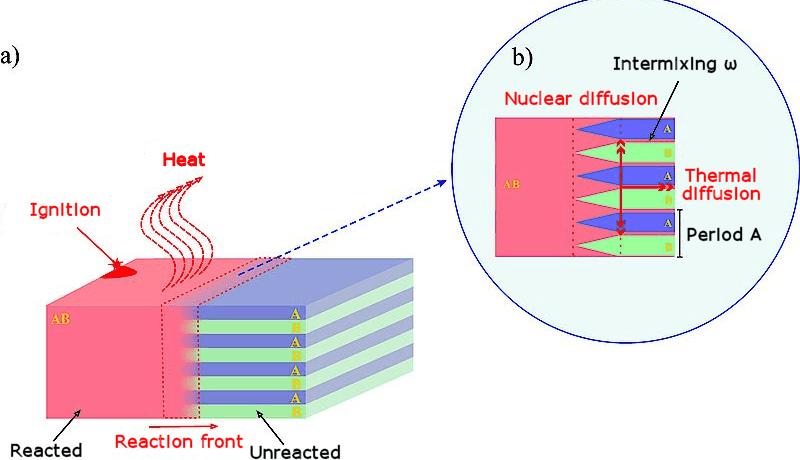‘Soldering’ with a laser

Researchers from the University of Saarland have, together with colleagues from Helsinki, discovered a new material which can connect electronic components together using a chemical method. Multiple very thin layers (1000x thinner than a human heir) of aluminum and ruthenium are placed on top of each other. When an intense laser beam is pointed at it, a large amount of heat is released in the nanometer thin layer and a homogeneous layer of ruthenium-aluminide is formed.
Researchers from the University of Saarland have, together with colleagues from Helsinki, discovered a new material which can connect electronic components together using a chemical method. Multiple very thin layers (1000x thinner than a human heir) of aluminum and ruthenium are placed on top of each other. When an intense laser beam is pointed at it, a large amount of heat is released in the nanometer thin layer and a homogeneous layer of ruthenium-aluminide is formed.
This brief heat can reach a temperature of 2000 °C. With this, components close together can be connected to each other without the addition of solder. The ruthenium-aluminide forms a layer between the components, just like solder does.
The advantage is that the heating is so very brief and localized that sensitive integrated circuits are not damaged or altered. In addition, the melting point of ruthenium-aluminide is high, so that it is virtually impossible that the connection is affected by any heat that these components generate. This is a problem for many integrated circuits at the moment, with defective equipment as a consequence.
More information: www.nature.com/articles/srep19535 en www.uni-saarland.de/nc/aktuelles/artikel/nr/14266.html (German)
This brief heat can reach a temperature of 2000 °C. With this, components close together can be connected to each other without the addition of solder. The ruthenium-aluminide forms a layer between the components, just like solder does.
The advantage is that the heating is so very brief and localized that sensitive integrated circuits are not damaged or altered. In addition, the melting point of ruthenium-aluminide is high, so that it is virtually impossible that the connection is affected by any heat that these components generate. This is a problem for many integrated circuits at the moment, with defective equipment as a consequence.
More information: www.nature.com/articles/srep19535 en www.uni-saarland.de/nc/aktuelles/artikel/nr/14266.html (German)
